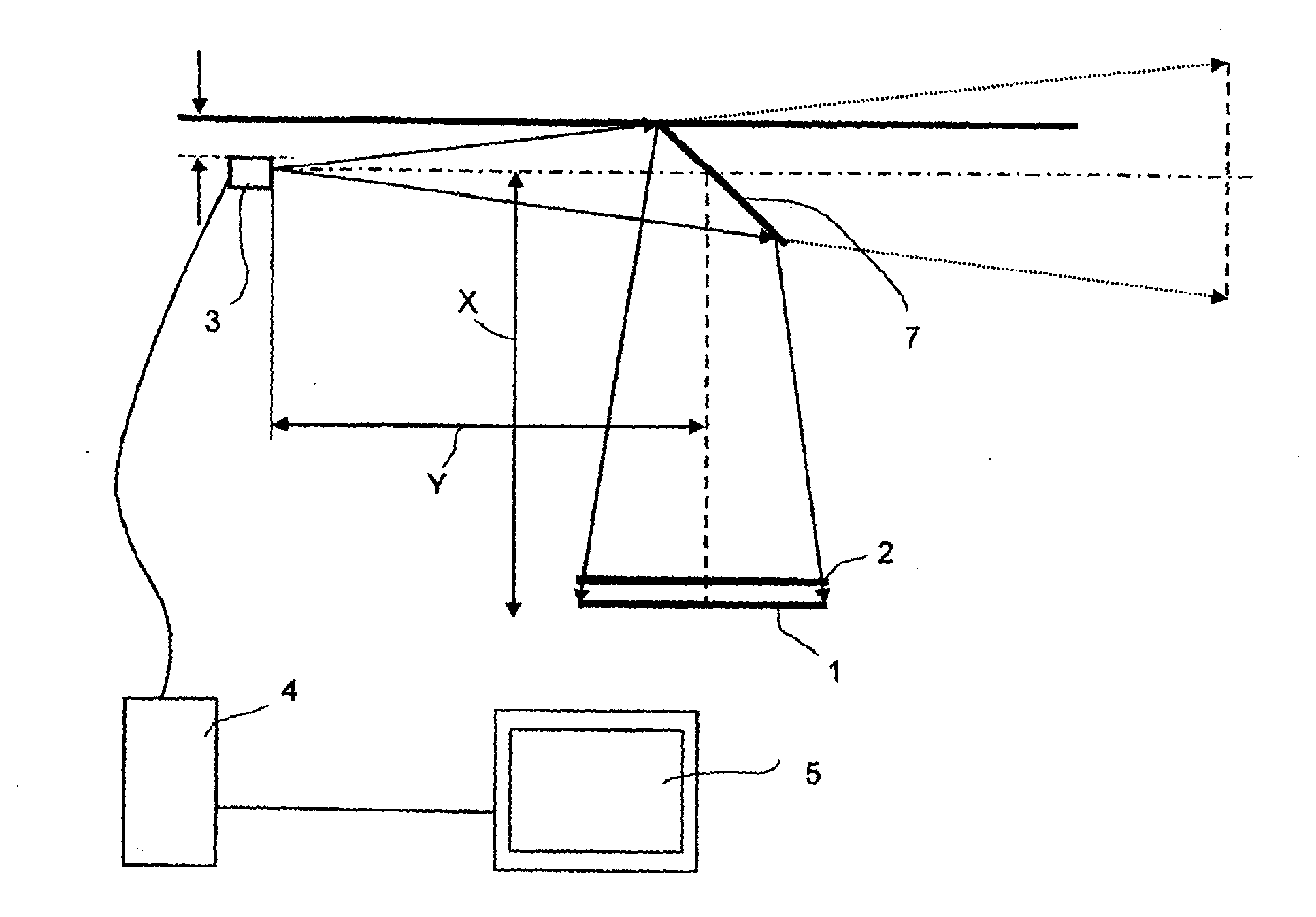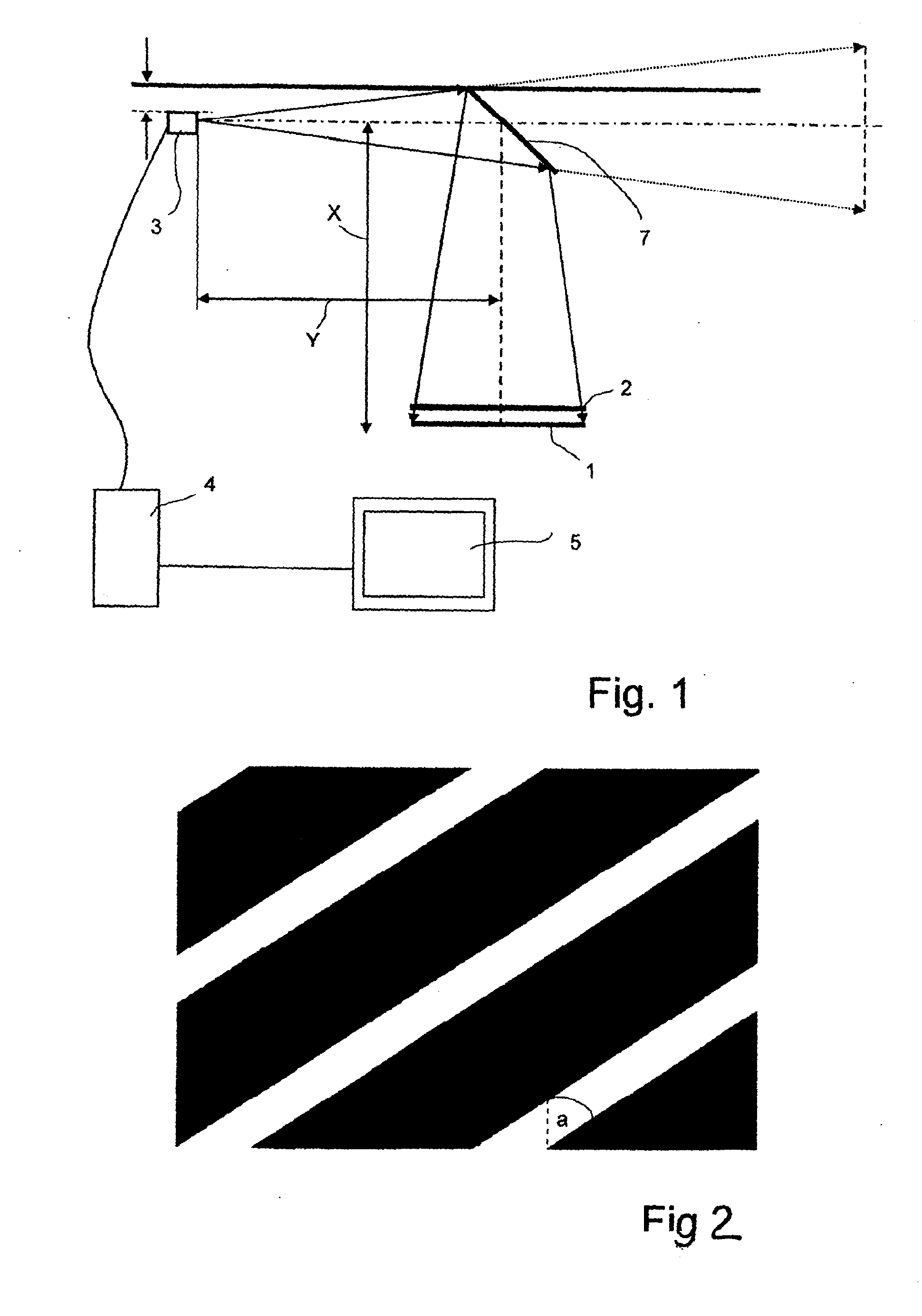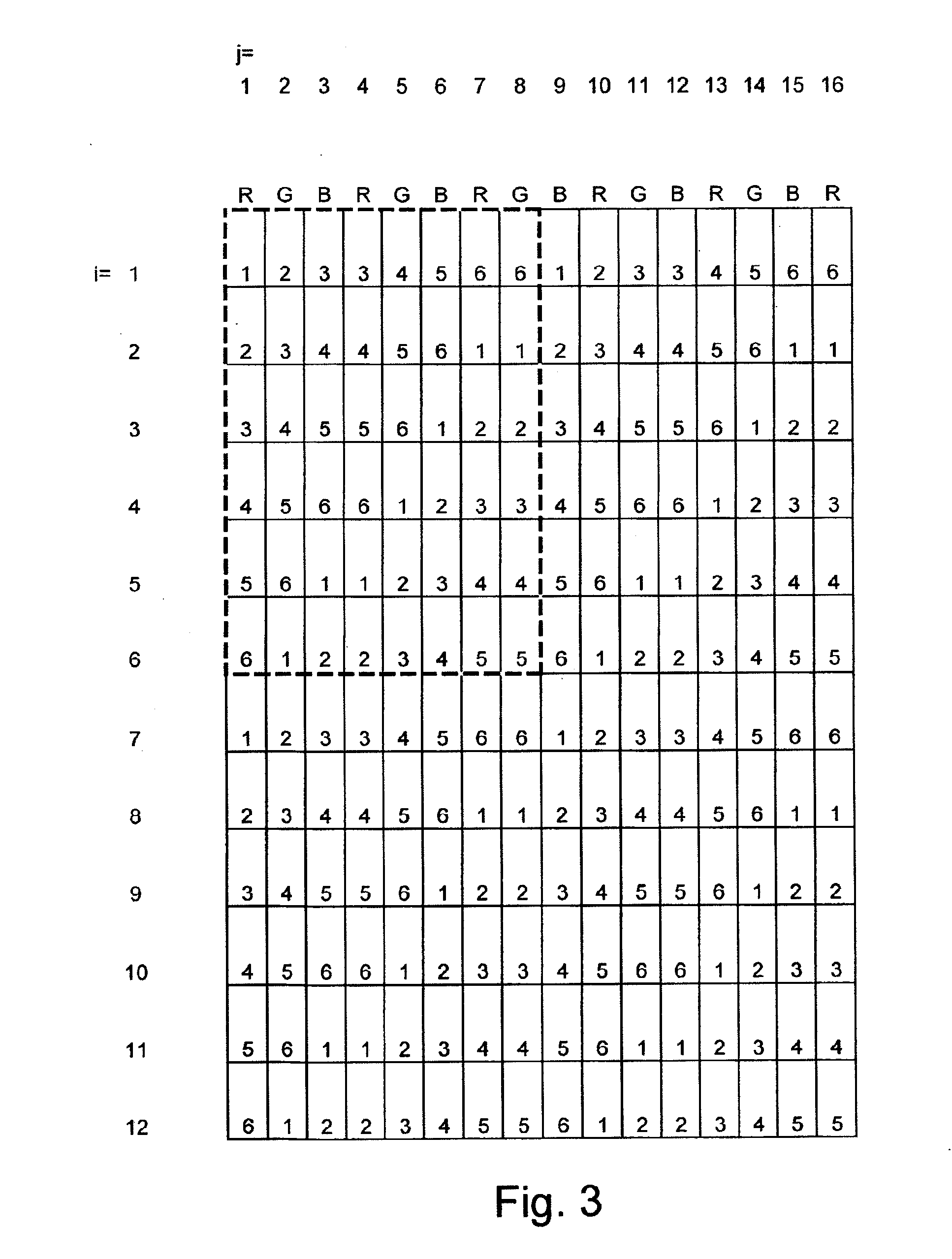Method for orienting a parallax barrier screen on a display screen
a technology of parallax and display screen, which is applied in the direction of instruments, measurement devices, electrical appliances, etc., can solve the problems of reducing the brightness of this type of 3-d system in comparison with a 2-d display, the failure of wide-scale dissemination of autostereoscopic systems for a long time, and the reduction of the brightness of this type of 3-d systems in a short time. , to achieve the effect of precise orientation and large viewing distan
- Summary
- Abstract
- Description
- Claims
- Application Information
AI Technical Summary
Benefits of technology
Problems solved by technology
Method used
Image
Examples
Embodiment Construction
[0043]It is noted that the drawings are not to scale. This refers in particular also to the angular dimensions.
[0044]FIG. 1 shows the schematic structure for realizing the method of the invention. In this case, parallax barrier screen 2 is oriented at the distance s on a display screen 1 with pixels x(i,j) in a grid having rows i and columns j, as a result of which a display screen for three-dimensional representation arises. Furthermore, a camera 3 can be seen, which is suitable in general for taking two-dimensional pictures and whose output signal is supplied here, by way of example, by means of a frame grabber card to a computer 4. Computer 4 converts this signal accordingly and enables the display on a monitor 5.
[0045]The method of the invention is carried out in the following steps: First, a positioning marker 6a is applied temporarily approximately in the middle or the edges of the image area of display screen 1. Display screen 1 with positioning marker 6a is now recorded with...
PUM
 Login to View More
Login to View More Abstract
Description
Claims
Application Information
 Login to View More
Login to View More - R&D
- Intellectual Property
- Life Sciences
- Materials
- Tech Scout
- Unparalleled Data Quality
- Higher Quality Content
- 60% Fewer Hallucinations
Browse by: Latest US Patents, China's latest patents, Technical Efficacy Thesaurus, Application Domain, Technology Topic, Popular Technical Reports.
© 2025 PatSnap. All rights reserved.Legal|Privacy policy|Modern Slavery Act Transparency Statement|Sitemap|About US| Contact US: help@patsnap.com



